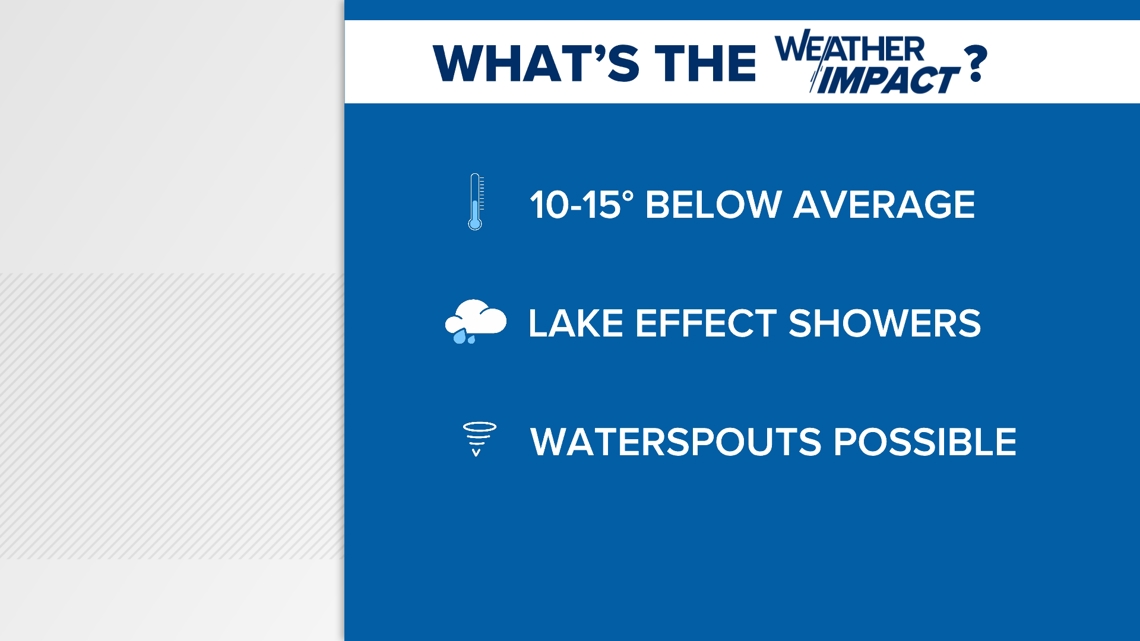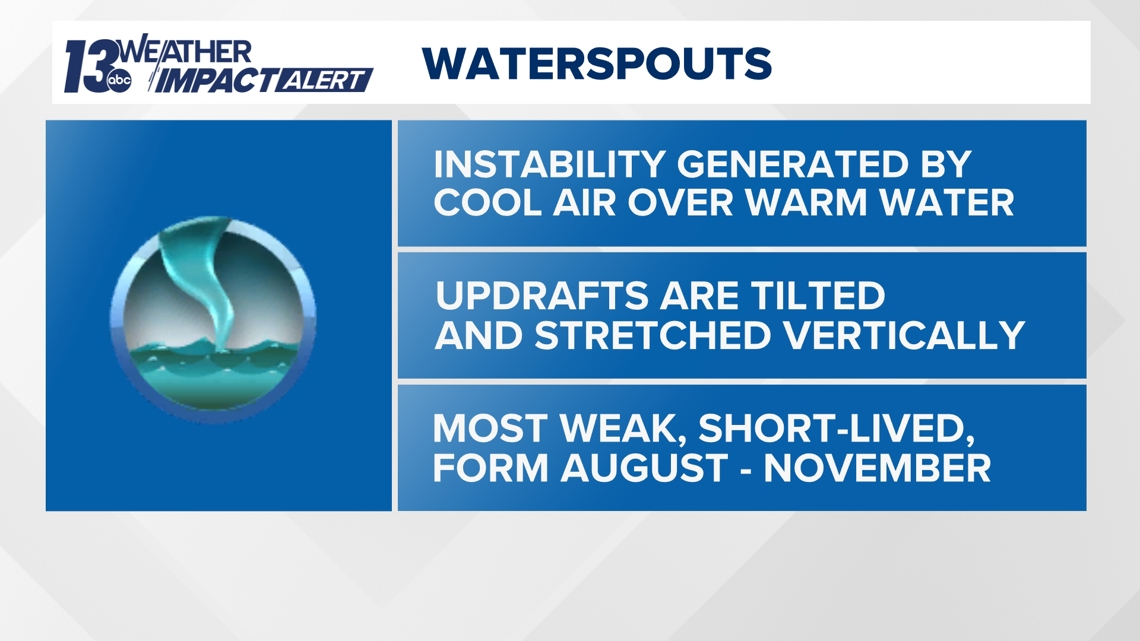GRAND RAPIDS, Mich. — We have issued a Weather Impact Alert for cool, damp and breezy conditions this Saturday. This alert is more inconvenient than hazardous, but there are some potential threats to be aware of, one of which being the chance for waterspout formation.


WHAT:
Waterspouts are rotating columns of air that form over a body of water, extending from the base of a cloud to the water’s surface. If the column does not touch the water, it is considered a funnel cloud. Waterspouts are most common in late summer and fall.
HOW:
For waterspouts to form, there has to be a cooler air mass moving over a relatively warmer body of water, generating instability. The direction of winds would also need to change with height to create some “spin” in the atmosphere.
Updrafts from the water’s surface are then tilted by the changing winds and stretched vertically, forming the spinning column. Waterspouts are often characterized by weak rotation and a short duration of time.
Waterspout formation typically occurs in five stages:
- Dark spot – a spot on the water’s surface that looks darker than its surrounding area. This is where the rotating column reaches the water.
- Spiral pattern – light and dark-colored bands spiral out from the dark spot on the water’s surface.
- Spray ring – a swirling ring of spraying water called a cascade forms around the dark spot, resembling the eye of a hurricane.
- Mature vortex – the most intense and recognizable stage of waterspout formation. A seemingly hollow column of air and water vapor extends from the cloud to the water’s surface.
- Decay – The vortex begins to weaken as warm air flows into it, causing the waterspout to dissipate.


IMPACT:
Although relatively weak and short-lived, waterspouts can still be dangerous, especially to swimmers and boaters. In some cases, waterspouts can move onshore which would prompt a tornado warning from the National Weather Service. Waterspouts that survive inland usually don’t last very long or travel very far, but lakeside communities could still experience storm damage and/or injuries.
TEXT US
TEXT your weather photos to us at 616-559-1310.
Please include the following with your photo(s):
- Your storm photos
- Your first and last name
- Date and time of your photos
- Locations of your photos
- What’s in your photos?
You can upload videos to YouTube and send the links to us, send them to us over Facebook Messenger, and short videos can be sent via email to wxwatcher@13OnYourSide.com
Have a 30-second video or photo to share? We'd love to share it with everyone! Share your images by texting your name and location to 616.559.1310 or email to Weather@13OnYourSide.com or post it to our 13OnYourSide Facebook Page
►Make it easy to keep up to date with more stories like this. Download the 13 ON YOUR SIDE app now.
Have a news tip? Email news@13onyourside.com, visit our Facebook page or Twitter. Subscribe to our YouTube channel.
Watch 13 ON YOUR SIDE for free on Roku, Amazon Fire TV Stick, and on your phone.

